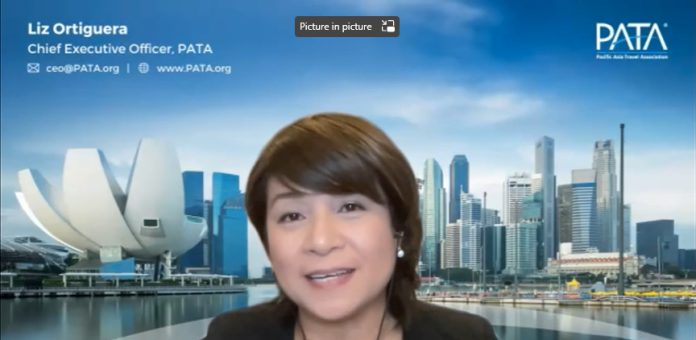The tourism scenario in India is taking a drastic shift with each day post pandemic due to the constant changing circumstances. The pandemic has brought down the travel and tourism sectors to a total halt. In 2020, approximately 6.33 million international tourists and non-resident Indians arrived in India, down from about 18 million in 2019.
The share of international tourist arrivals into India relative to South Asia was (YY-%) 2019-69.11%, 2020-67.2%, 2021-45.86%, 2022-56.63% and for the coming years the share is expected to be 2023-61.09%, 2024-65.61%, thus slowly achieving the levels as to where it was before pandemic.
However, with the opening of air services and borders, India needs to plan and execute an aggressive marketing and promotional campaigns to boost the tourism arrivals.
“Situations have changed now, and nothing is as clear as the pre-pandemic scenario. We must start looking on things with a different angle, share as much as perspectives as we can,” Liz Ortiguera, CEO, Pacific Asia Travel Association (PATA) said during a webinar organized by PATA India chapter.
Talking more about India, the CEO informed that India has outperformed APAC countries in the recovery with a faster capacity rebuild. “While other countries are suffering due to under capacity, India has bounced back nicely in the recovery phase,” she added.
According to economist’s research, when the desire for conscious tourism is cut across the geography, India stands at average 57% post pandemic which is relatively high when considering sustainable tourism practices and sense of responsibility, towards both consumers and corporate.
The World Economic Forum’s Travel & Tourism Competitiveness Report 2017 suggests that within Asia, China was forecasted to seeing the biggest tourism growth, becoming the biggest inbound market by 2030, where there will be 6.7 billion domestic trips by 2023, up from 4.7 billion in 2018.
But post pandemic, China’s ability to ‘flip’ capacity to domestic routes and encourage ‘staycations’ have appeared to provide a short-term operating solution but not profitability for the airlines. China, Taiwan’s and Japan’s continued lockdowns are holding back the wider regional recovery. The world is waiting for China to open up tourism, but Chinese policies are not expected to undergo changes before mid-2023.
Hence, this brings a great opportunity to India to establish itself as a sought-after destination. As Liz Ortiguera, PATA CEO, mentioned, “We expect India to be the ‘New China’ over the next 5 years.”
Sharing the impact of the pandemic on travel and tourism industry, they informed that travel has been considered as risk for the last 2 years, but the domain has still been able to be a force before and after the pandemic to support the recovery of the impact of the pandemic on the country.
Ortiguera added, “Millions of jobs were lost, and major sections came into extreme poverty. The unrecognized section of tourism is now keen to get back to its livelihood and get the people re-employed and a cooperative approach can only serve to the cause. Science is the same around the several markets across the world, but the market reaction is impacted by culture, politics, and economics.”
People must have cautious optimism towards travel after witnessing the impact of pandemic on the travel domain. Omicron is mitigated, but Covid is still evolving and as a travel concerned person it is one’s duty to follow covid-19 protocols to manage personal risk as well for others. Where Asia is more cautious than the west, recovery can be driven through connectivity, capacity and traffic. Alongside, the travel today is wellness influenced, even if the primary aim of the trip is not wellness, one makes 100 decisions in the course of trips related to wellness, and travelers are far now conscious these days about safety.
“Staffing shortages are a common drawback coming from several countries, it is not easily learnt from less privileged countries, but it is coming to Asia too. We are still projecting considering the moderate scenario that the volumes are going to come back by 2024. PATA is trying to leverage its channels to keep the industry and all the consumers informed on the statistics about several destinations and new products. Many destinations have evolved and concentrated on trends like digital nomad, work from nowhere, wellness, etc. PATA looks forward to reconnect organizations, consumers, and business connections to strengthen these trends,” Ortiguera added.
Kuhelika Roy Choudhury






